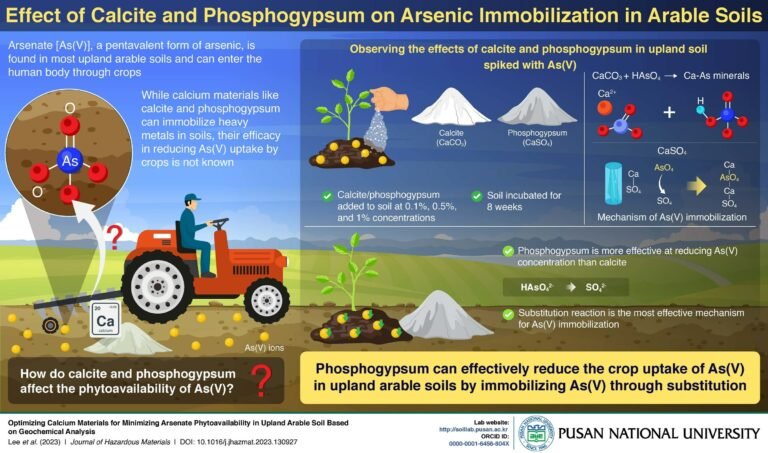As is a common pollutant in upland arable soils, which account for nearly 90 per cent of the world’s agricultural soil
Upland arable soil constitutes 90 per cent of the world’s agricultural soil. Worryingly enough, these soils often contain arsenic (As), which can enter the human body through the crops grown. Calcium materials such as calcite and phosphogypsum are known to immobilise heavy metals in soils. In a new study, researchers from Korea evaluated and compared the effectiveness of these two materials in mitigating As availability for crops in soils spiked with arsenate, a pentavalent form of As.
Of all the heavy metals appearing as pollutants in agricultural soil, arsenic (As) poses the greatest threat to human health. As is a common pollutant in upland arable soils, which account for nearly 90 per cent of the world’s agricultural soil. In its pentavalent form, known as arsenate [As(V)], As is easily absorbed by crops grown in these soils and, through them, enters the human body. Much effort has, therefore, gone into mitigating the uptake of heavy metal pollutants by crops grown in contaminated soil. Previous studies have shown that calcium materials such as calcite and phosphogypsum are effective in immobilising heavy metal pollutants. However, their efficacy in reducing As(V) availability for crops is not clear.
To address this knowledge gap, a team of researchers led by Professor Chang Oh Hong from Pusan National University (PNU) in Korea evaluated the efficacies of calcite and phosphogypsum in reducing the availability of As(V) for crops. Their findings were made available online on 1 February 2022.
“Phosphogypsum is a by-product generated from phosphate fertiliser generation, while calcite is a very common mineral found in limestone. Both of these, essentially, change the pH of the soil which, in turn, affects the As(V) availability to crops. Yet, previous studies have not looked at the effect of calcium materials on As(V) phytoavailability nor have they explored the mechanism through which this may occur. This study is, therefore, an important step towards that direction,” says Prof. Hong.
Accordingly, the researchers spiked samples of upland, arable soils collected from an experimental farm at PNU with As(V) to have maximum control over the conditions of the soil. Next, following a wet ageing period to allow the development of stable As ions, they added either calcite or phosphogypsum at varying rates and left the soils for incubation for 8 weeks.
Upon performing a chemical analysis of the soils after the incubation period, the researchers found that phosphogypsum was more effective at immobilising As(V) in the soil than calcite. They suggested that this was due to a mechanism induced by phosphogypsum in which sulfate (SO42-) ions were exchanged with hydrogen arsenate (HAsO42-) ions that, in turn, led to a reduced As(V) availability. The substitution mechanism was particularly suitable for upland, arable soils, which explained the higher effectiveness of phosphogypsum.
While the finding is exciting, Prof. Song is cautious about its implications. “While our study shows that phosphogypsum is an optimum calcium fertiliser for soil amendment, further research is still required to see the long-term effects of its use,” he says. “However, our results do bring us one step closer to making agricultural products safe for consumption,” concludes Prof. Hong.

